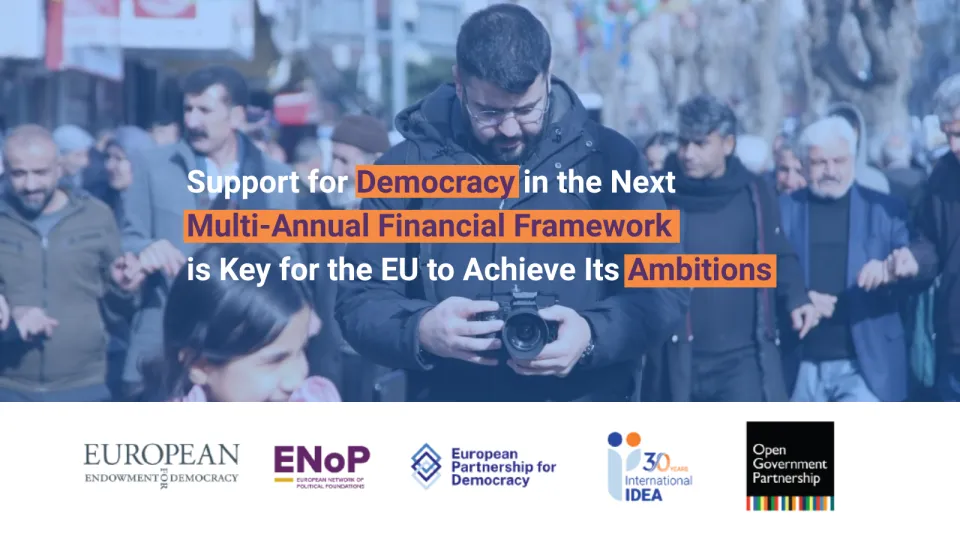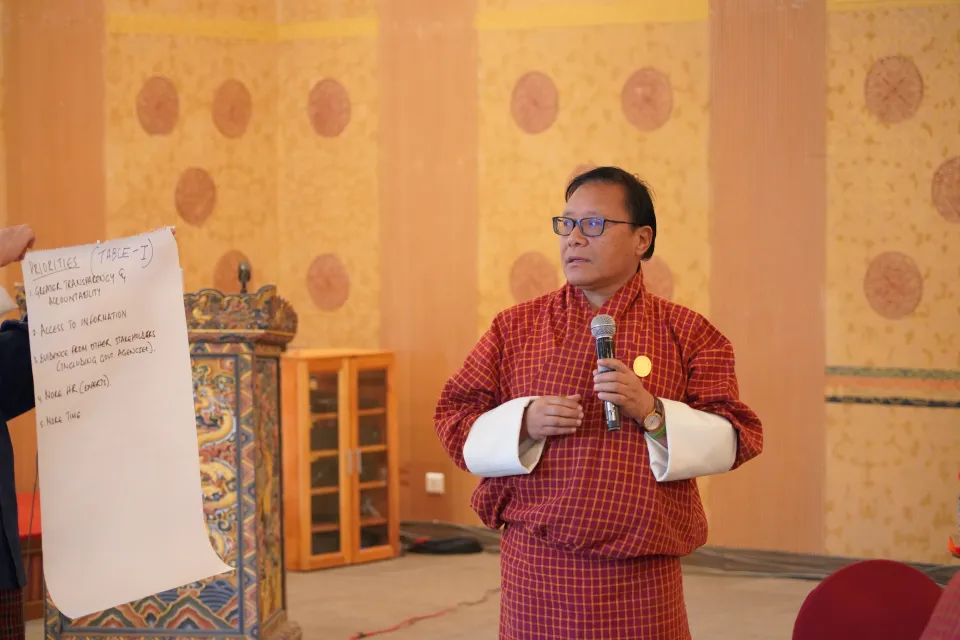Five things to know about Biometric Voter Registration

Over the past decade, technology, such as Biometric Voter Registration (BVR), has risen to meet complex electoral challenges. BVR measures and analyses a voter’s unique physical characteristics to verify their identify and their eligibility to vote. The technology targets identity theft, multiple voting and other mechanisms of voter fraud and manipulation. Yet, while BVR presents an opportunity to better secure electoral rolls and the integrity of elections, it does not come without obstacles.
Here are five things to know about BVR:
1. BVR uses a voter’s physical characteristics, such as facial features or fingerprints, to identify them.
The most commonly captured attributes are facial features and fingerprints. Retina and iris recognition systems are not yet widely used for electoral purposes.
Biometric technology can also analyse behavioral characteristics. This includes a person’s voice, keystroke or handwriting. Often, scanned signatures are a part of a voter’s biometric profile.
All biometric data is first captured by a camera or sensor as an image. The image is then processed into a biometric template and stored in a database. Paired with given information, such as the person’s name and birthdate, these images make up their voter profile. Through widespread collection, a biometric voter register is created.
Once a voter is registered with their set of biometric data, their unique template can be stored in different ways. For instance, it can be added, in print or electronically, to a voter ID card. With a comprehensive set of data, a biometric voter register can further cross-check collected templates to efficiently detect and delete duplicate registrants.
BVR can also help identify voters at polls, known as biometric voter identification (BVI). For instance, at a polling station, electronic devices, such as electronic poll books, scan a voter’s fingerprint. The device then checks the fingerprint against other prints stored in the BVR database. If matching algorithms determine the prints are equivalent, the voter’s identity is verified.
2. Around 25 per cent of countries use biometric voter identification.
According to International IDEA’s Information and Communication Technologies (ICTs) in Elections Database, 35 per cent of 130 surveyed countries capture biometric data as part of their voter registration process.
Twenty-five per cent of surveyed countries use biometric information to identify voters at polling stations. In many cases, this involves manual verification, such as a poll worker checking a voter’s appearance against a photograph on a voter list. Only 9 per cent of the surveyed countries use an electronic biometric identification system, in which a computer verifies the identity of the voter.
BVR is predominantly used in Africa, West Asia and Latin America. Some countries collect only photos, such as India, Pakistan and Afghanistan, while others only fingerprint scans, such as Morocco, Columbia and Peru. Many collect both, like Mexico, Nigeria and Mozambique. Still others like Brazil do more by collecting signatures in addition to photos and fingerprints.
In several cases, fingerprint scans are only conducted in selected precincts and not the entire country.
3. Certain communities reject BVR.
In some countries, there is or has been opposition to the use of biometric voter technology because the collection of biometric information may infringe on certain cultural beliefs and practices.
In Papua New Guinea, the electoral roll is heavily inflated and can be subject to abuse. The Commonwealth Observer Group has recommended that the use of a photo identification process, such as a national identity card (NID), could significantly improve the accuracy of the electoral roll and raise general confidence in the election. Yet, negative rumors circulate about whether malevolent sorcery is involved in the collection of biometric data, as well as the need to protect one’s real name from being used in such negative sorcery.
Similarly, some voters in rural areas of Nigeria believe that biometric data, such as their photograph, could expose them to “demonic manipulation, and could be used for occult practices by their enemies.” The risk of photos used to invoke harmful spirits is urgent for some citizens. In the Solomon Islands, belief in magic has also led to skepticism.
Nonetheless, what must be determined by each electoral agency whether the objections indicate an authentic opposition to the technology, or whether they are a result of misinformation or assumptions that can be addressed through the provision of information. It is the role of implementers to present biometric technology as, not meant to “inflict spiritual harm,” but of potential benefit to the integrity of elections.
Some electoral bodies have sought to design systems sensitive to superstition within its population. In Haiti, there are seats for religious sectors within the electoral council. In this way, each representative can help mediate and convey the interests and concerns of their respective communities in the decision-making and electoral design processes.
Still more tangible cultural barriers exist to BVR. In some rural areas of Afghanistan, women wear head coverings in which their facial features are less visible. In this case, the need to wear a religious garment poses a challenge to photo identification. Yet, this can be overcome by including exceptions to respect the practice. In 2018, the Independent Election Council of Afghanistan (IEC) determined that taking of facial photographs of women would be optional.
4. BVR often requires support outside of the electoral agency.
Given the complexity of BVR, and the time, effort, and money needed to maintain it, many electoral agencies struggle to implement BVR on their own. They often require external partners, or private companies, that can assist in effecting the new process seamlessly. Such partners can provide greater capacity, as well as expertise, to the on-the-ground technicalities of biometric voter registration.
However, this often raises new concerns for citizens. Namely, the protection of voter data when trusted with a private vendor. Many rightfully want to know what will happen with the personal information and biometric data they provide. Thus, while still cooperating with the contracted partner, the electoral agency must consider how best to protect public interest, as well as gain support from citizens.
In this way, even with external partners to ease the BVR process, standing agencies are still responsible to oversee it. Otherwise, if aspects of the partnership appear or are neglected, for instance if data is not stored or secured properly, the public may lose faith in the process as a whole. It is important to protect the same voter trust that BVR aims to strengthen.
This trust, between the electoral agency, implementing partner and voters, can also be sustained with a thoughtful, joint communication strategy. The buy-in of voters is as important as the design and function of the system itself. By transparently communicating the purpose and goals of BVR to citizens, through town halls or information sessions, electoral bodies empower the BVR system, as well as its participants.
5. The use of BVR is context-specific and cannot be globally recommended.
Before an electoral agency implements BVR, there are several important considerations, as outlined in International IDEA’s 2017 publication “Introducing Biometric Technology in Elections.”
Whether or not biometric data adds value depends on the context in which the technology is being used. In some cases, simpler and cheaper computers and databases (that only use biographical information, such as name, birthdate and address) can equally work.
Thus, the electoral agency must first assess the shortcomings of the current system, and then decide if biometric technology would address those needs. Is there a need for de-duplication of local and national voters? Is there a need to prevent impersonation at polling stations? Would the inclusion of biometric data, such as a photo or signature, significantly strengthen ID cards?
Given BVR’s costs, and natural risk of operational failure, these questions are critical. BVR requires labour to pilot, test and orchestrate the new technology. New equipment, installation and trained staff must be procured. If the need is not great, the use of BVR, although promising, may be outweighed, or an alternative solution may be recommended.
In order to be sustained, BVR also requires the conception of appropriate legal framework and registration procedures. This ensures that, over multiple election cycles, electoral agencies have the resources to uphold the technology.
Finally, when using biometric technology in elections, electoral bodies must discuss tradeoffs between inclusiveness on one hand and the integrity of the system on the other. This point is particularly relevant in the case of religious or belief-based skepticism, where one might consider the option of exceptions for certain categories of voters. Ultimately, people’s willingness to participate in a system, and their commitment to it, depends on their understanding of its value and benefits.





